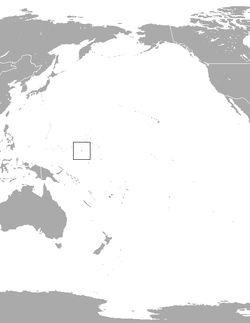| Kosrae flying fox | |
|---|---|
 | |
| Scientific classification | |
| Kingdom: | Animalia |
| Phylum: | Chordata |
| Class: | Mammalia |
| Order: | Chiroptera |
| Family: | Pteropodidae |
| Genus: | Pteropus |
| Species: | P. ualanus |
| Binomial name | |
| Pteropus ualanus Peters, 1883 | |
 | |
| Kosrae flying fox range | |
The Kosrae flying fox (Pteropus ualanus) is a species of megabat in the genus Pteropus found on the island of Kosrae, Micronesia. [3]
Contents
The Kosrae flying fox (Pteropus ualanus) has recovered to 2,000–3,000 bats but faces ongoing threats. [4]
